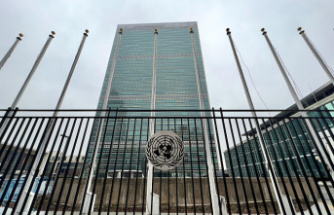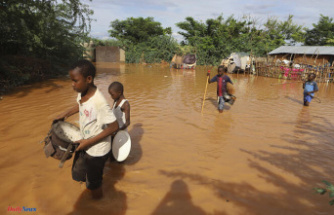The track of euthanasia ruled out, three options were still on the table this weekend: an opening of the lock, letting him end his life "like someone very sick" or extraction, had indicated the state representative.
It is therefore the hypothesis of an extraction, which already held the rope on Sunday, which is retained, as explained by Mrs. Isabelle Dorliat-Pouzet during a press briefing in the afternoon near the lock.
"It seemed possible to us to perhaps think about transport to the sea. In the interest of this beluga, it can be tried, we are working hard on it. We are all very happy to work on this option", he said. she declared. "No one can promise that she will succeed," she admitted, however.
Given the complexity of moving an animal of this size, weighing around 800 kg, sick and emaciated, the sub-prefect was unable to indicate "when, where and how" this delicate operation could take place.
In addition, the English Channel is not very close: the lock of Saint-Pierre-La-Garenne (Eure), where the cetacean entered by itself on Friday 70 km north-west of Paris, is about 130 km from the mouth of the sea.
The Eure prefecture told AFP that transport could be done by barge, land or helicopter.
- influx of donations-
The beluga whale spotted in the Seine last Tuesday was in a stable state on Monday, the ocean defense NGO Sea Shepherd told AFP.
"The beluga is still not feeding (a priori) but it continues to be curious. Around 4 a.m. it rubbed itself for 30 minutes on the walls of the lock and got rid of the stains that were appeared on his back. Antibiotics may have helped as well," Sea Shepherd tweeted.
Asked about the possibility of putting the beluga to sleep and transporting it, the president of Sea Shepherd France, Lamya Essemlali, explained on RTL "that it was not possible to put the dolphins to sleep for the simple reason that they are animals that breathe consciously. If you put a dolphin to sleep, it stops breathing and it dies."
The Marineland of Antibes (Alpes-Maritimes), the largest marine zoo in Europe, dispatched a team to the Eure, including "a veterinarian specializing in marine mammals" and which was expected at the start of the evening.
"We have been following the operations from the start remotely (...) We are moving forward step by step. There is no ideal solution, you have to weigh the pros and cons, analyze the advantages and disadvantages" of each solution considered, Isabelle Brasseur, head of education, research and conservation at Marineland, told AFP.
The Marineland team does not bring any equipment with them. Only “a stretcher, a fabric to place the animal before moving it. Above all, we bring our skills,” said Ms. Brasseur.
Asked about the cost of operations to try to save this beluga, the sub-prefect, underlined "the immense emotion" caused by the presence of this animal trapped in the waters of the Seine, revealing that a lot of donations flowed in, coming foundations, associations and individuals.
According to the Pelagis observatory, a specialist in marine mammals, this is the second beluga known in France after a fisherman from the Loire estuary had brought one up in his nets in 1948.
According to the same observatory, the beluga "has an arctic and subarctic distribution. Although the best known population is in the estuary of the St. Lawrence (Quebec), the closest to our coasts is in Svalbard", an archipelago located in the north of Norway, 3,000 kilometers from the Seine.












